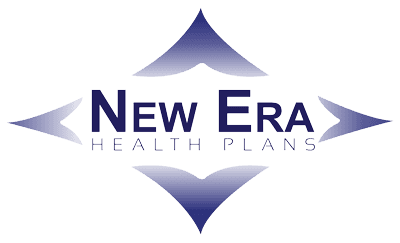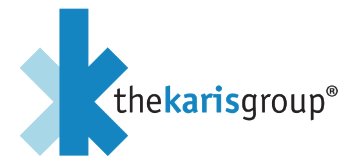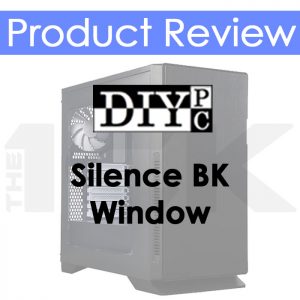Health Battle
When my own appendix tried to kill me and almost succeeded
This isn’t exactly a tech-oriented article but I thought it was important to share my story. There are two main chapters of my experience I want to share. The first part focuses on the events that took place at the end of 2018 when I found myself spending almost three weeks in the hospital. The second part was the battle with the institutions that make up the healthcare system in the US.
Timeline
- October 17th
It all started with some stomach pain at work after lunch, it felt like acid reflex so I just toughed it out, especially since this wasn’t the first time I’ve experienced this feeling. I’ve been known for eating far too fast and far too much at once.
By the afternoon, the pain in my sternum got worse, more than what I would call normal. I still toughed it out, but that night I vomited at least six times in two hours, after which I felt okay enough to rest.
- October 18th
The next morning, I decided to go to the urgent care center since I was still hurting in the same place. The doctor checked me out and thought it best to give me some fluids via IV until I was rehydrated and the pain had subsided. They proscribed some anti-nausea meds and sent me home.
- October 19th – 27th
During the following week and a half, I still had some minor pain roughly in the center of the abdomen. If I had to give the pain a number on a scale of one to ten, it was pretty much at a three3 but persistent.
- October 28th
That morning, I noticed the pain moved to the lower right portion of my abdomen. I also had to up the pain rating to a five. With those two changes, I decided to go back to the urgent care center where my doctor told me I should get a CT scan done as soon as possible. At the time, I thought that was over kill for some minor pain, but my mom convinced me to go to the hospital.
I drove down the road to Gwinnett Medical Center in Duluth where soon after intake into the ER, I had my first ever CT scan.. A short time after the scan, my ER doctor confirmed everyone’s suspicion: I had an inflamed appendix that’d been perforated or ruptured. Later I would learn it was more like it exploded. So it was time to settle in, get hooked up to IVs, and be scared out of my mind for the prospect of surgery.
- October 29th
For the first in my life, I had gone more than 24 hours without eating. Of course, eating was the last thing on my mind as I was prepped for surgery in the late morning. As my surgeon described it, he hoped to remove my appendix laparoscopically. Doing so would have meant a quicker recovery and discharge in a couple of days.
After multiple open incisions, a lot of poking around, suction, and two hours, it was done. Not that I knew because I didn’t wake up until later that night. I think my surgeon put it best when he said, “it was a mess in there”. He was pretty sure my appendix actually ruptured the first day I felt the pain in my abdomen solely by how much infectious fluid was sloshing around in my abdomen. By his and several other doctors’ admission later on, they couldn’t believe I had gone so long with a ruptured appendix this bad and not have gone into sepsis, much less only have a pain level of five.
With that ordeal over and pumped full of painkillers, liquid oxycodone and Dilaudid, I was ready to sit back and start my recovery period. Admittedly I enjoyed the painkillers and peeing away in my catheter, something I honestly didn’t expect to feel so relaxing, until it was taken out later that night. Just like with the surgery, a smooth recovery was not in the books for me or my nurses.
- October 30th
That day, my lunch meal plan was upgraded to full, which meant some lovely chicken and rice. Not long into that meal, I noticed something wasn’t quite right. I had some severe pain again that felt like the acid reflux from weeks ago all over again. This time, though, I had a hard time breathing too, much to the dismay of my nurse. My nurse had me sit up in a chair next to my bed until my surgeon came by. The moment he came in, he had a sternly worried look on his face. After feeling my stomach, all he could say was, “You don’t look good.” Before he finished the sentence, he was out the door. No sooner than he left did six nurses pile into my room. The head nurse got me back in bed, had me sit straight up, and informed me I would be getting a nasogastric tube inserted. I would not recommend this procedure. It was one of the worst experiences in my life, it involved having a half-inch tube inserted up my nose guided down my throat, ending up in my stomach so that everything that was backed up in my GI tract could be pumped out, it was not something I thought I ever had to deal with.
All this madness was due to my developing an ileus. Basically, my digestive system shut down and backed up to the point that it extended my stomach so much, it was pushed up against my lungs, making it hard to breathe. The procedure to alleviate this was to pump everything they could out of my system and wait for my digestive system to settle down and hopefully start back up in a few days.
This monitoring required an upgrade or downgrade—whichever way you see it—to the ICU where I was hooked up to every machine they had, including a pump that slowly pulled the contents out of my stomach.
- October 31st
At this point, I knew I was going to be there for a while. This was made even clearer when they hooked me up to an IV of TPN, a nutrition supplement, since I wouldn’t be eating physical food for some time.
Due to the continuous need to deliver TPN, antibiotics, and pain meds, it was determined I needed a PICC line: a special catheter that starts at the top of my arm and extends through the veins of the shoulder, down my chest, and directly to my heart. This system allows for multiple IVs to be attached at once. It also creates a convenient place to draw blood from so that I wouldn’t have to be poked multiple times a day.
- November 1st – 2nd
So began the almost hourly slog of changing out IV bags, emptying out my pee pan, and emptying out my JP drain, which was inserted after my surgery to drain any remaining fluid from my abdomen. The tube literally stuck out of the side of my abdomen and slowly filled up with reddish/clear fluid, and throughout the day, it had to be emptied.
For those of you keeping count, there was an NG tube sucking fluids out of my stomach, a JP drain sucking fluid from my abdomen, a PICC line with two IVs pumping antibiotics and TPN into my heart, heart monitors on my chest, and a pressure cuff on my arm that went off every 40 minutes. No other way to put it but pure hell.
One of the respites besides sleep from this hell were the on-time delivery of my two pain meds. With the PICC line in place, those pain meds went straight to my heart. The second they did, it was like no other feeling I have ever had. I almost thought I could fly. If it was wasn’t for all the equipment hooked up to me, I would have. After experiencing the feeling those pain meds gave, I had no lingering pre-conception for how people could get addicted to any pain meds they were given while in the hospital.
- November 3rd – 4th
Having met the criteria to leave the ICU, I returned to the recovery suite on the 6th floor, still hooked up to everything minus the blood pressure cuff. The NG tube became the bane of my stay making it incredibly annoying and difficult just to talk, and so many people wanted to do just that. It would still be two more days before it was removed. Even six months later as I write this, I can still fill that tube pushing against the back of my throat. Just the thought of it makes me cringe.
- November 5th - 7th
With the NG tube finally removed, I could start to feel like things were getting back to some kind of normalcy, at least as normal as they can get in a hospital. It was also time to start that completely foreign task of putting sustenance in my mouth instead of my arm. I can honestly say I enjoyed every juice bottle, oatmeal bowl, and Jello cup I got. The last two days as my meal plan was upgraded step by step to something more solid, I got to enjoy some very wholesome meals, and I challenge anyone that frowns on hospital food, especially after not eating for almost a full week.
Being unhooked from a majority of the machines, I was now free to get out of bed and get on my feet. With the help of a physical therapist, I took my first steps in days which were exciting but grueling. Luckily, over the next few days, the treks got longer and the help was reduced to none, which I was more than happy about. Getting back to being able to do some things on my own was a great feeling, except for that hospital gown which still had been tied up in the back where I couldn’t reach.
At that point, the only thing keeping me from being discharged was my digestive system producing some brown gold so the wait continued.
- November 8th
That morning, I was given the green light to be discharged even though I didn’t produce any brown gold. I could only think that I was finally free but of course just because I was leaving the hospital didn’t quiet mean I was able to start training for a marathon. The recovery period was going to take months. Unfortunately for me, this wasn’t going to be the last time I’d be lying in a hospital bed or even be under the knife. But in the meantime, I was heading home to enjoy my own bed.
It has to be said that my experience could have been so much worse emotionally if wasn’t for the amazing nurses that tended to me while I was laid up. Everyone who worked with me was nothing but professional, friendly, and sympathetic. There were so many I couldn’t even name them all, but I still want to thank each and every one of them from the bottom of my heart for everything they did and had to deal with.
- November 9th- 18th
Recovering back home was great even if I didn’t have as much room to walk around like in the wide halls at the hospital but having access to my PS4 and TV made up for that. Again, another slog of doing the same thing day in and day out began with the only interruption being a visit to my surgeon’s office to have my 12 staples removed.
Actually being able to take a shower for the first time in two weeks was a great feeling too.
When I was discharged, I was only prescribed a painkiller, no antibiotic for some reason. Never the less, I made it point not to take a single one. It helped that the pain never went above a four.
As a few days passed, I noticed an elevated temperature that persisted until it reached a hedge. When it broke 101, it was time to panic.
- November 19th – 21st
By brunch, it was clear I had to go back to the hospital and see why this fever wouldn’t go away. After an excruciating and increasingly painful six-hour wait in the ER waiting room at Gwinnett Medical Center in Lawrenceville (Now known as Northside Hospital Gwinnet), the parent hospital, of Gwinnett Medical Center – Duluth (Now known as Northside Hospital Duluth) I was back in a hospital gown being blasted with radiation from a chest x-ray and another CT.
The verdict was that there was an infectious mass on my liver that needed to be removed. Fortunately, this time, it could be done laparoscopically. This procedure used the CT machine to guide a good-sized needle through my side to my liver to remove the mass. It only took 30 minutes, and I was back to the recovery floor to wait out another period of checks until I could be discharged, which luckily only took two days.
This time I was given a full regiment of antibiotics to take home.
Ongoing
With recovery back on track, the battle for my health finally came to a close. Luckily, there have been no lingering effects that I’ve noticed so far.
Now the battle for my financial health began. Dealing with these people at times was even worse than the whole time I was in the hospital, and I have six years of payments to show for it.
Institutional Battle
Insurance Companies, 27 EOBs, and 21 Bills so far – How to get billed $121,093 for a ruptured appendix, the aftermath
From the onset, I have to say that I’ve been truly blessed to have good health for most of my life. Even though I rarely go the doctor for anything, I try to keep an active insurance policy for just this kind of emergency. After BCBS pulled out of the metro-Atlanta market, I had I to look for another insurance company.
By recommendation of someone in the healthcare field, I signed up for a plan by New Era also known as Philadelphia American Life Insurance Company. They focus on indemnity plans which pay a fixed amount to providers and facilities based on a database of all health care procedures and services. These amounts are typically in line with what Medicare pays. The policy I had at the time would pay two times what Medicare would pay for service providers. If you have a provider that charges less than the average, New Era will actually pay you directly for the difference. The incentive is to look for the most cost-effective provider, something you can’t really do in an emergency.
On top of that, the policy would pay a fixed amount per day in the hospital, more for ICU stays. Anything over what they cover is up to the policy holder to pay, no matter how much it is. The thought is that health institutions gauge patients so you can negotiate your bills down to what they should be. To do this, New Era partners with an organization called the Karis Group whose sole purpose is to negotiate with hospitals and service provides to reduce bills. The fact that a company exists for this sole purpose is a whole other story.
At the time New Era policy premiums were cheaper than any ACA plans. This is due to the fact that they are not ACA compliant in almost anyway. They have a maximum they will pay out, and they don’t have a maximum out of pocket expense to protect the policy holders from those “health institutions gauging patients.”
Admittedly this plan sounded too good to be true, but I thought I would never really need it. But when I did need it and those bills started to roll in, I figured out why it sounded too good to be true. The thing that has to be remembered here is that New Era plans, as their reps are constantly reminding me now, are not major medical insurance plans, even though they cost close to real ones. So it’s obvious now they wouldn’t be covering what I needed them to cover. Here is the list of all the EOBs they processed which all turned into bills over the next six months.
| DATE | FACILITY/PROVIDER | ORIGINAL BILL | DISCOUNTS | INS PAID | WHAT I OWE |
|---|---|---|---|---|---|
| 17-Oct | Urgent Care Center | $960 | $350 | $140 | $470 |
| 28-Oct | Hospital Facility | $88,166 | $0 | $45,000 | $41,400 |
| 28-Oct | ER Doctor | $1,450 | $0 | $150 | $1,300 |
| 28-Oct | Radiology | $428 | $0 | $187 | $241 |
| 28-Oct | Urgent Care Center | $404 | $120 | $120 | $163 |
| 28-Oct | Physician Group | $400 | $169 | $100 | $131 |
| 29-Oct | Anesthesiology | $2,177 | $0 | $1,717 | $460 |
| 29-Oct | Surgeon | $1,745 | $741 | $1,004 | ($836) |
| 31-Oct | Medical Group CBO | $830 | $302 | $300 | $228 |
| 31-Oct | Radiology | $403 | $0 | $245 | $157 |
| 31-Oct | Radiology | $28 | $0 | $19 | $9 |
| 2-Nov | Hospital Group | $800 | $0 | $400 | $400 |
| 3-Nov | Hospital Group | $80 | $24 | $100 | ($44) |
| 3-Nov | Radiology | $28 | $0 | $19 | $9 |
| 4-Nov | Hospital Group | $145 | $61 | $100 | ($16) |
| 19-Nov | Hospital Facility | $20,190 | $0 | $6,000 | $14,190 |
| 19-Nov | ER Doctor | $1,479 | $0 | $160 | $1,370 |
| 19-Nov | Radiology | $428 | $0 | $187 | $241 |
| 19-Nov | Radiology | $34 | $0 | $22 | $12 |
| 20-Nov | Radiology | $518 | $0 | $315 | $203 |
| 20-Nov | Physician Group | $400 | $169 | $100 | $131 |
| Total/Averages | $121,093 | $1,936 | $56,385 | $60,219 |
So yeah $121,093 was the total of everything I was originally charged over 21 different bills. New Era covered just under half of all the bills, which I admit is exactly what they said they would cover and there were even three instances where they made a payout to me directly because a provider charged less than twice the Medicare provision. Still, maybe if I paid New Era twice as much, they would have covered all of the bills, making them twice as expensive as a real plan. Of course, it is just as clear that the hospital and service providers charged some outrageous prices. Never the less, I still had over $60,000 of out-of-pocket costs left for me to pay.
Negotiating to Settle
Now that New Era was done with their part, it was time for the negotiating to begin. Here New Era passed me on to the Karis Group. I provided my Karis Group “patient advocate” with all my bills and laid back hoping they could do their magic.
Again, I was told by multiple parties including New Era that they’d seen miracles done by these guys so I hoped for a miracle. What I got was months of silence, even when I asked for more info. Before I knew it, my two biggest bills totaling $54,000 were turned over to a collections agency who started calling me every day. Of course, once I told the “patient advocate” at Karis about the collection agency, he contacted me back, and out of nowhere, he said, “I managed to get 40% off if you settle this month.” Oddly enough, the collection agency offered me 30% off.
What I didn’t know was that my “advocate” was quitting the Karis Group and his last day was the day he called me about the 40% discount. According to his replacement, they may have done more if it was worked on from the beginning, but the consensus was that the hospital group refused to negotiate more than that 40%.
Here is where I stand: my two biggest bills with the 40% discount got knocked down to $32,790. All my other bills that were sent to completely random collection agencies were settled, most for 30% discounts, altogether adding up to $3,864. The only way I could get the discounts was to settle which meant I had to pay the collection agencies in full or I would get nothing and be stuck with the original $60,219. So I took out a personal loan for $36,654 at 6.5% which I’ll be paying off for the next six years.
Lessons learned
The unfortunate fact is until someone does something to get medical service providers bills brought in line with realistic expectations, major health insurance policies are going to be the only thing that can protect individuals from being put into so much debt that may have to file for bankruptcy. Now I know it’s crazy to think that allowing hospitals and service providers to continue their cabal with insurance companies will result in lower bills because it obviously won’t.
Again, for now to protect yourself, you need to have a legitimate major medical plan. In my situation, I’m now with an ACA compliant plan with an $8,000 max out of pocket expense for in-network and $12,000 for out of network providers. Yes, that is still a lot of money but if a similar emergency were to happen to me again, I would know that the most I would have to pony up out of pocket is $20,000. That’s 16 grand less than what I ended up paying with my old New Era plan. I will personally never trust an indemnity plan provider again, and I would absolutely never advise anyone else to get one, no matter how good it sounds or cheap it is.
The last time I talked to one of New Era’s brokers and told them about my situation, they said, “We now have plan ‘extensions’ that protect you from hospitals overbilling.” Of course, those extensions cost extra, bringing the prices of the New Era plan even higher, making them less competitive with a real major medical plan. Those extensions don’t cover providers that only work at the hospital like anesthesiologists or ER doctors.
I hope my story has given you some insight on the growing problem and troubling situation people face working around the healthcare system in the US. All I can say is, beware of everything you sign up for, read all the details, and ask questions. Most importantly, do not expect for one second that anyone else will be on your side but you.
Please Consider a Donation
Please Consider a Donation to help pay these expenses off as soon as possible. Thank you!






